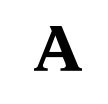Throughout the course of our social relationships and interactions, we often feel duped, back-stabbed, and taken advantage of by others. The descriptive term usually employed to label the masters of such craft i.e. deception, is ‘double-faced’. Like all clichéd catchwords, seldom does it inspire further inspection. But, is the term truly limited to guile and deceit; or, is it an innate human personality trait?
Typically, ‘double-faced’ is used to suggest that the same person behaves or acts differently towards someone or something in their presence than they would in their absence; hence, the inference of guile and deceit. This is actually all too general. For there is a wide range of possible dispositions and their contrasts that one person might entertain in their interactions with another person(s). Many alternatives to the ‘nice and mean’ scenario do exist.
Furthermore, the spectrum of opposite qualities pertaining to the behavioral duality known as ‘double-faced’ simply provides plausible representations of the form (first idea): individuals being sheep or beasts. A great many oscillate between being sheep and beast. At times they would be peaceful and avoid conflict. Whilst at others, they become instigators of aggression and conflict.
So, what of this form of the ‘double-faced’ personality trait: that of sheep and beasts?
The truth of the matter is this:
The quality of being ‘double-faced’ vis-á-vis its form (i.e. first idea) is, philosophically speaking, an innate human personality trait; given that each and every human individual is simultaneously, and inherently, a sheep and a beast. And, it is critically important to note that this has nothing to do with malice and benevolence. In other words, it is farthest from being based on one’s intentions [emphasis added]. That being said, it is thus neither a question of chronology (when that happened); nor that of motive (why that happened); rather, it is a question of occurrence or manifestation (what has happened or manifested).
We are all sheep and beasts. Which to dominate our behavioral tendencies depends—to a great extent—on our self-perception of personal strengths, abilities, and level of endurance. The main catalyst for the transformation—from a sheep to a beast—is usually an aggrandized self-perception.
All too often, people erroneously perceive this transformation as others ‘showing their true colors’. That is, poetically speaking, all very fine; nevertheless, it shall never satisfy our reason nor intellect. A sheep does not become a beast simply because the ‘time was right’. Nor does it make this radical change driven by a motive. For neither motives nor impeccable timing could guarantee the outcome [emphasis added].
When it comes to the repercussions of human interactions, power—or, the perception of power, to be more precise—is the most crucial determinant input that our predictions of outcomes rely on. Power, or the perception of it, rests on three pillars: strengths, abilities, and level of endurance. These go along with their contradictions, to be sure: strengths along with weaknesses; abilities along with inabilities; and, high along low levels of endurance.
To elucidate this further, we ought to heed that the measurement of these three criteria (or, dimensions) is often relative. That is, in comparison to their presence and levels in the other person(s). First, strengths here mean the areas wherein a comparative advantage is so vividly apparent. Second, abilities denote the aptitude with which one can execute their strengths. Third, and last, the level of endurance refers to the perception of possible consequences, especially those unfavorable to one’s self, and the severity at which one might sustain each single consequence—needless to say, their aggregate load as well [much emphasis added here!].
In reality, sheep turn into beasts when their self-perception is aggrandized: that is, when every dimension of their power {strengths, abilities, and endurance} is dramatically improved. Thence, one would not trouble themself contemplating the possibility of counteraction—much less, retaliation. At that point, they would be certain that the chances of retaliation are paper thin; and even where the other person counteracts, one holds the conviction that they have sufficient endurance as to render such consequences insubstantial/harmless. Therefore, the sheep that makes this radical transformation has already neutralized the primary inner deterrent to aggression and conflict i.e. the fear of potentially unbearable, or harmful, consequences.
The bottom line is, being ‘double-faced’ is an innate human tendency—already activated in some, yet dormant in others. Its status depends on circumstantiality. Both sheep and beast could be found inside each and every single one of us, simultaneously, at any given point of time. Therefore, it isn’t a matter of when or why a sheep turns into a beast. They, the sheep and the beast, have been floating in our cognitional sphere since the day we were born. Moreover, ever since one becomes conscious, they start to advance their own interests; hence, it is safe to assume that some sort of qualified motive has always been there for the beast to emerge to the surface.
Thereon, the real question to understand this duality, ‘double-faced’, is: What has happened that dramatically improved one’s perception of every dimension of their power and neutralized their anticipation of detrimental fallouts that their actions might, potentially, set afoot?







